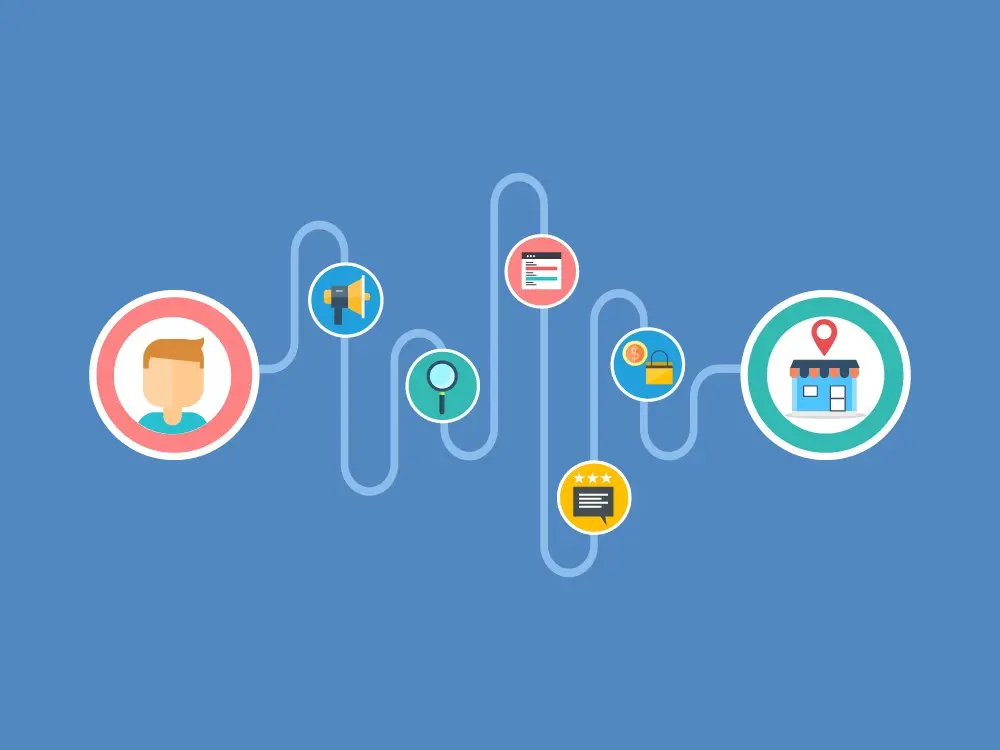A detailed guide on customer segmentation in retail e-commerce business
It is becoming clear that customer segmentation in retail business is vital to the success of modern enterprises. The sudden change in consumer expectations has led to the rise of targetted personalization. At the moment, cash is crucial to consumers’ mindset. This shift in consumer spending behavior births a new reality: previous customer profile means nothing, but their current situation means everything.
Unexpected economic downturn brings their own set of audience segments, and how retailers spend their marketing dollars should reflect such unforeseen changes. Therefore, it is crucial to learn from past tough times and understand that your consumers are saving and spending in new ways that can’t be imagined.
Customer segmentation is the proven method of ensuring that your e-commerce business remains profitable despite intense competition in an unpredictable business environment.
Table of content:
- What is Customer Segmentation in Retail?
- Types of Customer Segmentation in E-commerce Business?
- 7 Efficient Customer Segmentation Strategies to Increase
- What is the Best Way to Segment Customers in E-commerce?
- What are the most common market segmentation mistakes?
- Customer segmentation tools
This detailed guide will focus on the essential aspect of customer segmentation and how you can implement it appropriately in your e-commerce business.
What is Customer Segmentation in Retail?
Customer segmentation separates customers into groups based on common characteristics, such as spending habits, gender, similar interests, and geographic locations.
Customer segmentation in e-commerce is also known as target audience segmentation or consumer segmentation.
Types of Ecommerce Customer Segmentation
Before discussing the proven ways to perform customer segmentation efficiently, it is essential to discuss the types of customer segmentation utilized in e-commerce businesses. It would be best for you to implement each segmentation type in your advertising plan.
In marketing, the four main types of customer segmentation in retail businesses are:
- Behavioral segmentation
- Geographic segmentation
- Demographic segmentation
- Psychographic segmentation
Others are:
- Technographic segmentation
- Needs-based segmentation
- Priori segmentation
Let us uncover what each of them implies for your business.
1. Behavioral Segmentation
Behavioral segmentation focuses on the unique behavioral patterns of each customer. The traits exhibited can help you know how best to target some specific users. These behavioral traits include spending habits, repeat purchases, and cart abandoners.
Example of behavioral customer segmentation
For instance, if 98% of your users carry out their daily activities on your mobile apps, spending more money on the web version of the application will not be of added advantage to your firm.
2. Geographic Segmentation
In geographic segmentation, customers are grouped based on their physical location. This type of segmentation is vital because consumers in the same environment show similar preferences in certain conditions.
When conducting geographic segmentation, the areas of interest are state, city, country, e.t.c.
3. Demographic Segmentation
In demographic segmentation, customers are grouped based on similar characteristics. This type of segmentation focuses on obtaining essential information from customers such as family size, state, city, country, income, age, education, e.t.c.
Customer biodata is easier to collect compared to other segmentation types.
4. Psychographic Segmentation
In psychographic segmentation, the aim is to group customers based on similar psychological traits such as beliefs, lifestyle, opinions, interests, habits, e.t.c. Psychographic attributes of customers are not easy to deduce because exhibited characteristics are dynamic in different situations.
Example of psychographic customer segmentation
For instance, if a large percentage of your customer base shares the same beliefs on reducing the intake of sugary drinks, you can launch a line of healthy natural drinks to target these customers.
5. Technographic Segmentation
Technological segmentation focuses on how targeted customers relate to technological devices. It is based on customers’ preferences for some specific digital devices over others, e.g., preference for desktop apps over mobile apps.
7 Efficient Customer Segmentation Strategies to Increase Sales in E-commerce Business
These customer segmentation strategies are:
- Creating engaging seasonal promotions.
- Re-engaging and retargeting your customers.
- Prioritizing returning visitors as a unique customer segment that must be promptly served.
- Segmenting your customers based on previous purchase history.
- Deploying automated chatbots to segment-specific users.
- Segmenting your customers based on satisfaction level.
- Creating a new customer segment based on product browsing history.
What is the Best Way to Segment Customers in E-commerce?
Different visitors to your E-commerce website differ by county, purchasing habits, other peculiar traits e.t.c. It is imperative to monitor and track each visit to your website. The best way to segment the customers are :
1. Personalized Data
Why it is important
It is of uttermost importance because it enables you to have a deeper understanding of information such as age, gender, and income level. You can tailor specific products to address the customer segment with this information.
How to do it
Implement a web script on your E-commerce platform to collect this personal information from your users, whether during registration or when checking out after adding to the cart.
2. Abandoned Cart Users
Why it is important
Endeavor to collate the data of visitors who have completed orders and those that haven’t checked out within one month. A customer who previously purchased your product might not need a convincing promotion before they make a purchase again
How to do it
Immediately a customer makes a purchase, automatically add them to the “Recently Purchased” segment and include a precise timeframe based on when the purchases were made.
3. Visitor Tiers
Why it is important
Analyze whether those who made purchases are first-time visitors, logged-in users, guest users, or repeat buyers. By insights into their visits and how they interact with your products, you can best know how to segment the customer tiers.
How to do it
To accurately detect the visitor tiers, implement a cookie or window level javascript object code on your E-commerce website to store this type of data.
4. Device Types
Why is it important?
Analyze the devices (Tablet, Mobile, Desktop) your visitors use. Compare the impact of mobile traffic to your websites with other device types to better focus your marketing spend.
How to do it
Use the built-in Google analytics functions to have a deeper understanding of your customer’s technological device preference.
5. Source Type
Why is it important?
Track where your website customers are coming from to enable you to make cost-effective decisions on how best to target them.
How to do it
Create a “visitor source type” menu that tracks visitors coming from referrals, search engines, ad campaigns, and direct searches.
Why is customer segmentation important in E-commerce?
Customer segmentation is of uttermost importance in E-commerce business because it helps build stronger customer relationships, improve product offerings, and accurately guides efficient marketing campaigns.
What are the advantages and disadvantages of market segmentation?
The significant benefits of market segmentation are that it aids customer retention and improves market specialization and expansion.
The demerits of market segmentation are that it is expensive to carry out, and there is a higher probability of wrong selection when trying to identify the right audience group.
What are the most common market segmentation mistakes?
The market segmentation mistakes are:
- Relying on only past behaviors.
- Focussing on customer segments that do not align with business goals
- Customer segments grouped with little or no data
- Favoring demographic segmentation over psychographic profiles of customers
- Focussing on the customer base that is too vague
What is the most difficult way to segment customers?
Because psychographic segmentation groups customers based on traits such as values, beliefs, and opinions. It becomes challenging to adopt when making marketing decisions.
Why do so many customer segmentation strategies fail?
So many segmentation strategies fail in e-commerce because it is challenging to decide which variable is most important.
How can market segmentation reduce risk in e-commerce?
Market segmentation helps minimize the risk in e-commerce because it allows business owners to aim at the right audience at a minimal cost compared to targeting a mix of audiences.
Customer segmentation tools
These are:
- Google analytics
- MailChimp
- Adobe analytics
- Twilio segment
- Mautic segmentation tool
Wrapping Up
Whether you are considering venturing into an E-commerce business or you are a big business or small startup, customer segmentation is an efficient strategy to deploy to make the most out of every dollar spent. It Is imperative to know that it is best to align segmentation with core business goals when carrying out customer segmentation.


